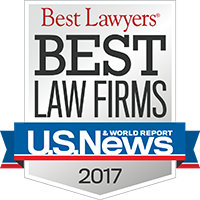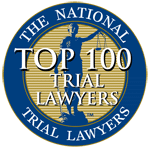On July 14, 2014, the Equal Employment Opportunity Commission (EEOC) issued new enforcement guidance on pregnancy discrimination and related issues; the new guidance constitutes the Commission’s first comprehensive update on the subject in more than 30 years.i
Interestingly, the guidance was issued just two weeks after the U.S. Supreme Court accepted review of Young v. United Parcel Service, Inc.,ii in which the Fourth Circuit Court of Appeals recently held that the Pregnancy Discrimination Act does not require exactly the type of accommodations now contained in the new EEOC guidance.iii Two of the five EEOC Commissioners voted against issuing the new guidance, indicating its controversial nature. With the Supreme Court’s review of Young still pending, the new EEOC guidelines may be of limited value. A decision in Young is expected to be handed down in 2015.
The new guidance clarifies both employer obligations and employee protections in relation to pregnancy and pregnancy-related issues. The report is primarily focused on four areas: (1) The Pregnancy Discrimination Act; (2) applicability of the Americans with Disabilities Act to pregnancy and pregnancy-related issues; (3) other protections for pregnant employees; and (4) best practices.
(1) The Pregnancy Discrimination Act:
The purpose of the Pregnancy Discrimination Act (PDA) is to protect women from adverse employment consequences on the basis pregnancy, “before, during, and after [their] pregnancies.” The new guidelines discuss employer requirements under the Act, notably:
(a) Anti-Discrimination: employers may not discriminate in any aspect of the employment relationship on the basis of past, present, or future pregnancy or pregnancy related issue;
(b) Leave Policies: employers must allow employees with pregnancy related limitations to take leave under the same terms and conditions as similarly-limited, non-pregnant employees;
(c) Light Duty and Reasonable Accommodation: employers must afford women with pregnancy related physical limitations the same reasonable accommodations that are afforded similarly-limited non-pregnant employees. This includes reasonable employer accommodations relating to post-partum lactation, and alternative assignments for pregnant women who may be temporarily unable to perform certain job functions (e.g. lifting more than 50 lbs., standing for extended periods of time.) See Young v. United Parcel Serv., Inc., 707 F.3d 437, 440 (4th Cir. 2013), cert. granted).
(2) Applicability of the Americans with Disabilities Act:
In the ADA Amendment Act of 2008 (ADAAA), Congress clarified that for the purposes of determining whether an individual is protected under the Act, the definition of “disability” should be construed in favor of broad coverage. Under the ADAAA there is no requirement that an impairment persist for any particular amount of time before it is considered “substantially limiting”; thus, a number of pregnancy-related impairments may now constitute a disability within the meaning of the Act.
For example, under the new EEOC guidance, a pregnant woman diagnosed with preeclampsia and ordered by her doctor to remain on bed-rest for the duration of her pregnancy is likely to qualify as having a disability under the Act.
(3) Other Protections for Pregnant Women:
The Family Medical Leave Act requires that employers allow up to twelve weeks of leave in any twelve month period for the “birth and care of the employee’s newborn child….”
The Patient Protection and Affordable Care Act provides that employers must provide a reasonable break time for lactating mothers to express milk until the child’s first birthday, and must provide a private place other than a bathroom for the same purpose. However, employers are not required to compensate employees during this time, and employers with fewer than 50 employees may not be subject to these requirements if providing such accommodations would impose an undue hardship on the business.
(4) Best Practices:
The new EEOC guidance concludes with a list of recommended best practices that employers may proactively adopt to reduce the risk of non-compliance with any pregnancy-related employment regulations. For example, employers are encouraged to educate managers and employees about their rights and responsibilities in regard to pregnancy and pregnancy –related issues, and regularly review relevant federal, state, and local laws on the same subject.
Conclusion:
Some of the more controversial positions advanced by the new EEOC guidance are those relating to light duty and alternative work assignments for pregnant and lactating women who are temporarily unable to perform their normal job requirements; as well as those expanding the EEOC’s interpretation of the term “disability” within the context of the ADA, requiring employers to provide reasonable accommodations for temporary, pregnancy-related impairments such as morning-sickness, gestational diabetes, and pregnancy-related carpal tunnel syndrome. It remains to be seen whether the guidance will survive the Supreme Courts pending review of the Young decision.
While the above overview examines several significant aspects of the EEOC’s new guidance, it is not comprehensive. A copy of the new guidance in its entirety may be found at: http://www.eeoc.gov/laws/guidance/pregnancy_guidance.cfm#med.
If you have any questions or would like more information on any of the issues discussed above, please contact Christopher J. Forrest, Esq. or Gary Clexton, Esq. at Miller & Steiert, P.C.
i. See EEOC Enforcement Guidance: Pregnancy Discrimination and Related Issues http://www.eeoc.gov/laws/guidance/pregnancy_guidance.cfm#med
ii. See U.S. Supreme Court Docket Number 12-1226: http://www.supremecourt.gov/Search.aspx?FileName=/docketfiles/12-1226.htm; http://www.scotusblog.com/case-files/cases/young-v-united-parcel-service/
iii. See Young v. United Parcel Serv., Inc., 707 F.3d 437, 440 (4th Cir. 2013)











